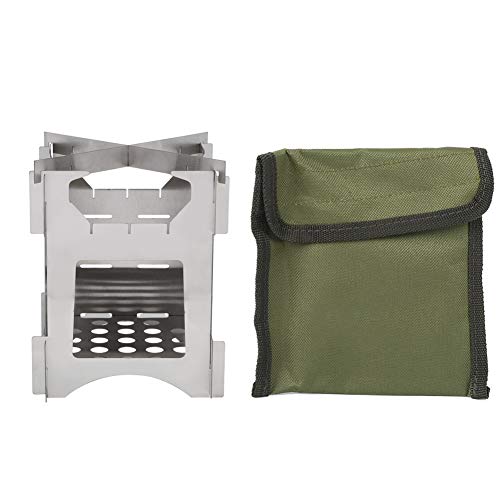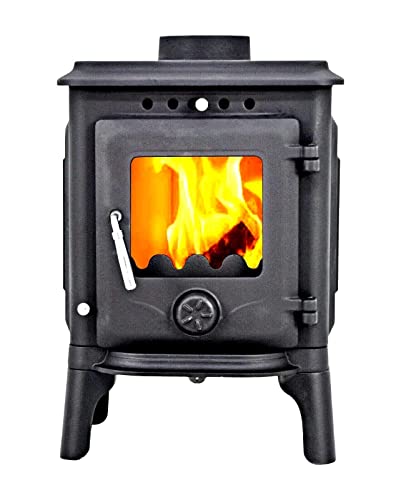자유게시판
| 제목 | The 10 Most Popular Pinterest Profiles To Keep Track Of About Wood Bur… |
|---|---|
| 작성자 | Chester Reaves |
| 조회수 | 25회 |
| 작성일 | 24-10-28 14:20 |
| 링크 |
본문
 Wood Burning Stoves Near Me
Wood Burning Stoves Near Mebest wood Burning stove in the world stoves are beautiful and efficient method of heating your home. But, there are a few things to consider when purchasing a new stove. Included in this are energy efficiency that is certified by the EPA and cost, as well the maintenance requirements.
Be careful not to become "number bound" and make a decision solely based on a specific rating or BTU output. Also, consider aesthetics, suggestions from a reputable retailer and customer feedback.
Cost
Wood stoves can add an elegant, elegant look to any house. They come in a wide range of colors and styles to fit into any style. They can be a viable alternative to expensive heating systems. They are also energy-efficient and cost-effective. There are many factors to consider prior to purchasing a new wood burning stove. This includes the initial cost as well as the installation cost, and additional items like chimney liners.
The price of a wood stove depends on the model and size you choose. There are freestanding burner for less than PS700. This stove comes with a large viewing window, which is kept clean by a powerful airwash system. It is multi-fuel which means it can burn a variety of fuels.
Noncatalytic woodstoves are less expensive than catalytic models but are more difficult to ignite. They also require more fuel in order to produce the same heat. They can release a higher amount of particulate matter than catalytic models. Despite these disadvantages, the noncatalytic stove is an ideal choice for many customers.
Pellet stoves are another popular alternative to wood-burning stoves. They operate in the same manner, but they use smaller pellets of wood or recycled materials to generate the fire and warmth. They are less maintenance-intensive than wood stoves, but they don't have the same amount of warmth.
You'll need to consider the expense of installing an exhaust system when you choose a wood stove or pellet. Most wood stoves must have an air vent system that connects to a chimney, whereas others require an outside combustion air intake. It is possible to have your wood stove approved by local building inspectors depending on where you live and the building codes that apply to your area.
If you're installing a wood stove inside an existing fireplace, you'll likely to spend less money on installation. You'll need to install a chimney liner and you may need to hire someone to maintain the chimney on a regular basis. In addition the freestanding wood stove cannot reach all rooms in a home with multiple floors, which means you'll need to put in radiators in other areas to supplement the heat.
Energy Efficiency
Many homeowners are searching for alternatives to traditional heating systems since the cost of electricity as well as natural gas continues to rise. Wood stoves are one of the most sought-after alternatives to traditional heating systems because they provide a low-cost and sustainable source of heat. They also burn cleanly, which decreases the amount of pollution that is in the air.
Modern wood burning stoves feature a high level of energy efficiency, which means they generate more heating for your home with less fuel. This is due to the fact that modern fireplaces wood burning stoves burning stoves have smaller combustion chambers compared to older models. They also have catalytic combustor, which helps to burn fuel more efficiently. They also produce less harmful emissions, which is essential if you live in an area that requires compliance with the stricter standards for air quality.
Another reason why log burners are greener than traditional open flames is that they permit you to regulate the amount of air delivered to the fire, so that it can burn at a lower temperature for longer. This will help to reduce the amount of smoke generated by the fire and also prevent the buildup of flammable creosote in your chimney.
Burning a variety different types of wood, including scrap and reclaimed wood, will produce a more effective fuel mixture that will reduce the amount of carbon dioxide produced by the fire. You can also burn unwanted wood that was discarded in building projects. This way, you can cut down on the cost of buying firewood and help to preserve our woodlands.
Wood is a carbon neutral fuel since it's a renewable resource. The trees absorb carbon dioxide as they expand and release it upon burning, thereby creating an endless cycle of life. By sourcing local wood you will also help the local economy and reduce your carbon footprint.
Another benefit of having a wood-burning stove is that it can serve as an additional source of heat in case an outage in power. If you can store enough logs that you can to keep your home warm for a number of days. You can also use your stove to heat water and cook food.
Environmental Impact
Based on the type of wood used and the speed at which it is burned, using a wood stove could result in negative health and environmental consequences. Wood burning releases harmful gases, such as carbon monoxide and nitrogen oxides, as well as fine particles called PM (particulate material). PM (particulate matter) is a mixture of harmful substances, such as black carbon, soot and tar. These pollutants are known to cause variety of health problems, including asthma and heart disease.
The carbon dioxide emissions released from wood-burning stoves contribute to global warming, which negatively impacts the environment as well as human health. Burning wood can also release volatile organic compounds (VOCs), a major source of VOCs in indoor environments. VOCs, a kind of pollution, have been linked to a number of health issues such as headaches and irritation of the eyes.
VOCs are created by the incomplete combustion of wood and can cause damage to the respiratory tract, lungs and circulatory system. They also contribute to a variety of environmental problems such as the loss of biodiversity as well as water quality issues and soil erosion. In some areas the concentrations of VOCs found in best wood burning stove in the world smoke could exceed the standards set by the federal government.
According to a report by Undark Five states have offered incentives to replace older wood-burning models with EPA certified models. However, the majority of these appliances only offer slight improvements over the previous models. They're also costly and require electricity for the fans, controls and pellet feeders.
Consequently, some environmental agencies have begun to abandon incentives to encourage the purchase of new wood stoves in favour of encouraging people to switch over to other sources of heat. The State of Oregon, for instance requires homeowners to get rid of uncertified wood-burning stoves and encourages them to heat pumps.
Wood stoves are more energy efficient than other heating methods like electric or gas furnaces. They produce more heat from less wood than their electric or gas counterparts, which makes them a cost-effective and sustainable choice for heating homes. However, they should be regularly inspected and maintained to cut down on the amount of fuel required and increase efficiency. For instance, cleaning out unneeded feed systems and hoppers at the end of the season will reduce corrosion and ensure that the stove is ready for use again in the autumn. Additionally regular cleaning of the stove's flue vent will prevent flammable creosote buildup.
Safety
Wood burning stoves provide a cozy alternative to heating however, they also pose fire hazards that can threaten your family's health. Smoke inhalation is a risk for fires as well as carbon monoxide poisoning and a host of other serious issues. You can protect your home and family members by taking the proper safety precautions.
Make sure that the stove is vented and installed properly. A certified professional should install the chimney, flue pipe and connectors. The chimney should be at least three feet above any objects which could cause fire. This includes overhanging trees or buildings that are adjacent. Install CO and smoke detectors in every bedroom, and on every floor of the home. Connect them all together so that they all sound if one is activated. Replace batteries and check your alarms regularly. Keep combustibles, such as paper, garbage, plastics, and plastics away from your stove and don't ignite them in the vicinity of it.
Never leave a wood burning stove unattended. This is especially true at night. If you are using a wood-burning appliance in the bedroom switch off the heat and open the windows prior to going to sleep. This will prevent wood smoke from entering the room and creating CO poisoning.
If you're going to make use of a wood-burning fireplace you should consider installing an air-cleaning system. These systems neutralize and absorb volatile organic compounds in the exhaust air stream before it leaves the fireplace. Keep your stove clean and the grate, draft louvers and draft hoods free of ash.
Wood smoke is harmful to everyone but is especially harmful for children and older adults with weak lung capacity. It can also trigger asthma and respiratory infections. If you can, stay away from shed wood burner-burning stoves on days with high pollution levels. The EPA and individual states provide daily reports on air quality.
Certain modern wood stoves are more efficient than old models, but they release large quantities of pollution into the air. Choose a model that has been endorsed by the EPA as being more than 72 percent efficient, to reduce your exposure. Also, only burn dry or seasoned wood. This kind of wood produces more heat and has less toxins than fresh, green wood.





